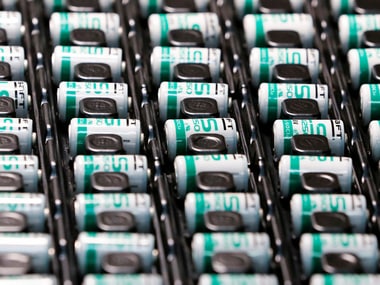
The factors that limit the global EV market include the less energy-dense batteries and probable shortage of lithium mining capacity, and possible safety concerns with EV batteries are posing a threat to the market's expansion for EV batteries. In Europe, Portugal also has smaller deposits of lithium. This puts it ahead of other countries with significant reserves, such as Australia (2.7 million tons), Argentina (2 million tons), and China (1 million tons).

Several major battery companies are based in the United States, including QuantumScape, A123 Systems, Enovix, SES AI, and Amprius Tech.Ĭonsidering lithium reserves, Chile has the largest known reserves of lithium in the world, with a total of 8 million tons. South Korean companies and Japanese firms also have a significant presence in the market. Four of the ten largest battery manufacturers are based in China. As technology is emerging, many countries across the globe are beginning to enter the battery manufacturing industry.Ĭhinese firms dominate the electric vehicle (EV) battery market, accounting for 56% of the market share. Many small countries are also involved in the production and development of batteries. Battery tech manufacturers are situated around the world, and they produce a wide range of battery types, including lithium-ion batteries, lead-acid batteries, and nickel-metal hydride batteries, among others. We talked about the 10 most advanced battery technologies in a separate article in detail. (NASDAQ: TSLA ), Ford Motor Company (NYSE: F ), and XPeng Inc. These countries have big EV firms like Tesla, Inc. Some of the key battery tech manufacturing countries include China, Japan, South Korea, the United States, Germany, and India. These countries are home to large battery manufacturers, and often have well-developed supply chains and infrastructure to support the production of batteries on a large scale. Several countries are key players in the battery tech manufacturing industry and claim a major share of the global market. If you want to read about some top countries in terms of lithium battery production, go directly to Lithium Battery Production by Country: Top 5 Countries.

In-line refractometers by Schmidt + Haensch are the perfect tool to monitor the manufacturing process of those separators and to maintain highest quality standards.In this article, we discuss lithium battery production by country. It is important to keep in mind that the temperature of the water should not increase, otherwise you would have hot steam with a high NMP concentration again. The NMP changes its aggregate state and becomes liquid and is no longer highly inflammable. In the container, the hot NMP steam mixes with the cold water, the concentration of NMP in the air decreases and the concentration in the water rises. Therefore, the steam is diverted and collected in a special container, names recovery tower. NMP is volatile from a temperature of 203☌ and is very harmful to the environment and health. At the end the iron rods are put into a drying oven, where the NMP evaporates. NMP is used as a solvent to dissolve PVDF, so PVDF can coat the positive rod. However, the production of lithium batteries is associated with many dangers.įor the production of lithium batteries, iron rods are fed into an NMP and PVDF solution in order to bind lithium ions to the rod. Because of its standard potential of around -3.05 V and the resulting high cell voltage, lithium is the best possible negative electrode material for batteries. Lithium is used as active material in the negative electrode. Monitor the manufacturing process of separatorsĪdvantages of lithium batteries are a high energy density, a high cell voltage as well as a wide temperature range. Recycling reduces the costs as well as the harmfulness. The use of NMP is associated with high costs. The steam produced during production is toxic and rapidly flammable. N-Methyl-2-pyrrolidone (NMP) is a chemical base required in the production of lithium batteries. These multilayered separators are usually composed of one or more polyethylene layers and at least one polypropylene layer.

Polymer separators, similar to regular battery separators, are used in Lithium ion batteries to separate the anode and cathode while also enabling the movement of ions through the cell. Lithium ion batteries are lightweight, high density power sources for many different devices, like mobile phones, laptops, electric cars and even aircraft.


 0 kommentar(er)
0 kommentar(er)
